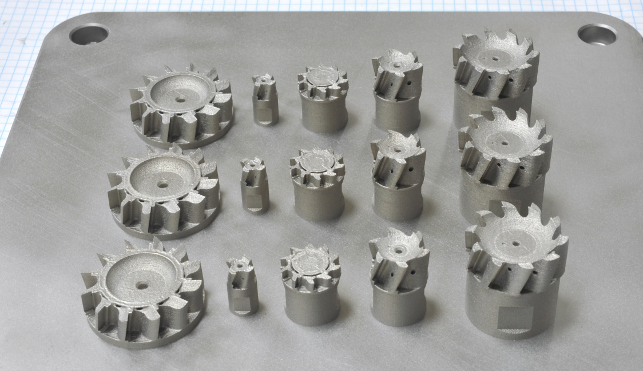
Germany’s Komet Group is one of the world’s leading suppliers of precision cutting tools for high-precision drilling, reaming, milling, threading and process monitoring and has supplied innovation to the machining industry for almost 100 years.
The Group, which has its headquarters in Besigheim, currently employs more than 1,500 people, including its subsidiaries, and is represented in around 50 countries.
In addition to developing, manufacturing and distributing high quality premium products, the company uses its years of technical know-how to analyse customers’ production processes, right down to the smallest detail, and then develop tailored solutions to help them achieve greater efficiency for all stages of their machining.
With such a strong focus on innovation and continuous development, it was perhaps inevitable that Komet Group staff would come up with some tooling designs that were too expensive, or even impossible, to make with conventional manufacturing methods. As a result, Dr. Reinhard Durst, Research and Development Manager for hard metal tools at Komet Group, has been investigating the potential of additive manufacturing for tooling production and the equipment available on the market for several years.

The new range of Komet’s PCD screw-in milling cutters feature main bodies manufactured on Renishaw’s machines, reducing component weight and improving cutting characteristics
Solution in additive manufacturing
Dr. Durst has been working with Renishaw for the last year, “because its offer has convinced us from a technical as well as an application point of view.” This transfer of knowledge and know-how is inherent throughout Renishaw’s new and growing network of Additive Manufacturing Solutions Centres. Before buying the machine outright, customers can lease the latest Renishaw equipment at a Solutions Centre and work independently on their projects.
Renishaw staff are always available to provide advice on the use of the machines. In this way, potential customers can familiarise themselves with additive manufacturing technology, with expert help on hand, and discover how it might meet their specific requirements, without the need for a large up-front investment.
“Parts produced with additive manufacturing can reach an up to 99.9 per cent consistent structure, just like rolled or cast metal components,” explains Ralph Mayer, the manager responsible for additive manufacturing services at Renishaw.
“However, the correct strategy must be applied for every component. Our strength lies in our skill in analysing the technical challenges of our customers’ components and working with our customers to find the most effective solution.”
First joint project
The first of the projects handled jointly between Komet and Renishaw was the development of a new range of PCD (Poly-Crystalline Diamond) screw-in milling cutters. The main bodies of the cutters are manufactured on a Renishaw metal additive manufacturing system, with multiple bodies produced during each cycle of the machine, and then fitted with PCD blades and screwed onto their tool holders.
The use of the Renishaw technology to manufacture the tools allows geometries to be produced that would be almost impossible by conventional means. “Thanks to the additive process we have been able to place many more PCD blades on each tool,” comments Dr Durst.
“We have changed the arrangement of the blades and achieved a substantially greater axis angle. Compared to conventional milled tools, we have greatly shortened the grooves. These changes mean that the tool is a lot more productive for the user.” For example, with a 32mm screw-in head, the number of grooves and blades has been increased from six to ten, achieving a feed rate that can be up to 50 per cent higher.
In addition, the ability to optimise the paths of the coolant channels ensures that each cutting edge is supplied precisely with coolant through a separate channel, while the external design of the bodies helps to ensure that chips are removed reliably from the face of the tool.
Weight savings
Additive manufacturing also offers the potential to reduce component weight since material can be used only where it is necessary for the optimum functionality in the component. It also outperforms conventional production methods in terms of delivery time for any special or experimental tools needed by Komet’s customers.
“The ability to freely design the internal and external tool geometry alone means that excluding this additive process from our future plans would be inconceivable,” predicts Dr Durst. “It gives us the ability to increase tool performance and productivity to such a great extent that it creates considerable added value for our customers.” Dr Durst considers the decision to work in partnership with Renishaw to be fully justified. “It is not easy for a company that is new to metal additive manufacturing technology to work out the best laser parameters on its own,” he claims.
“Renishaw has contributed a wealth of knowledge to help us find the parameters that are needed to produce a good tool. The new design freedom from additive manufacturing technology and the cooperation with Renishaw is helping us to develop even more innovative tool solutions.”
Renishaw helps bring additive manufactured cutters to market
Default






